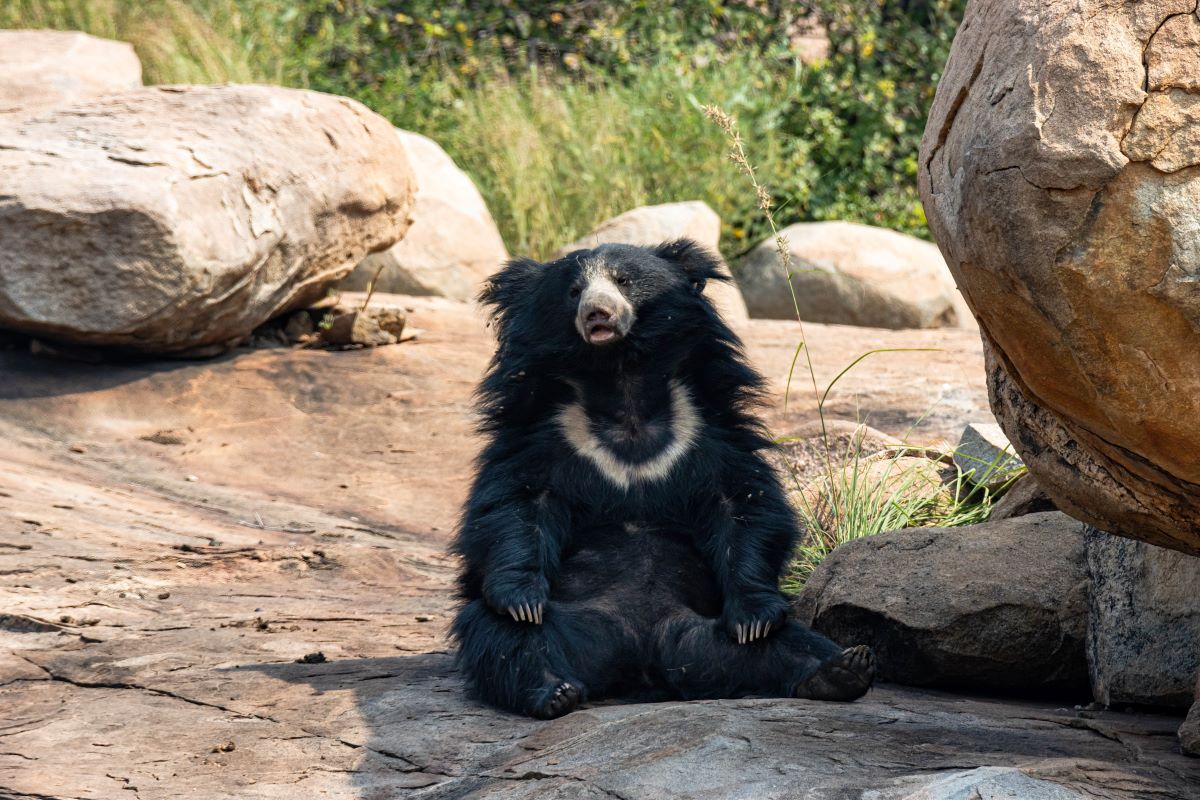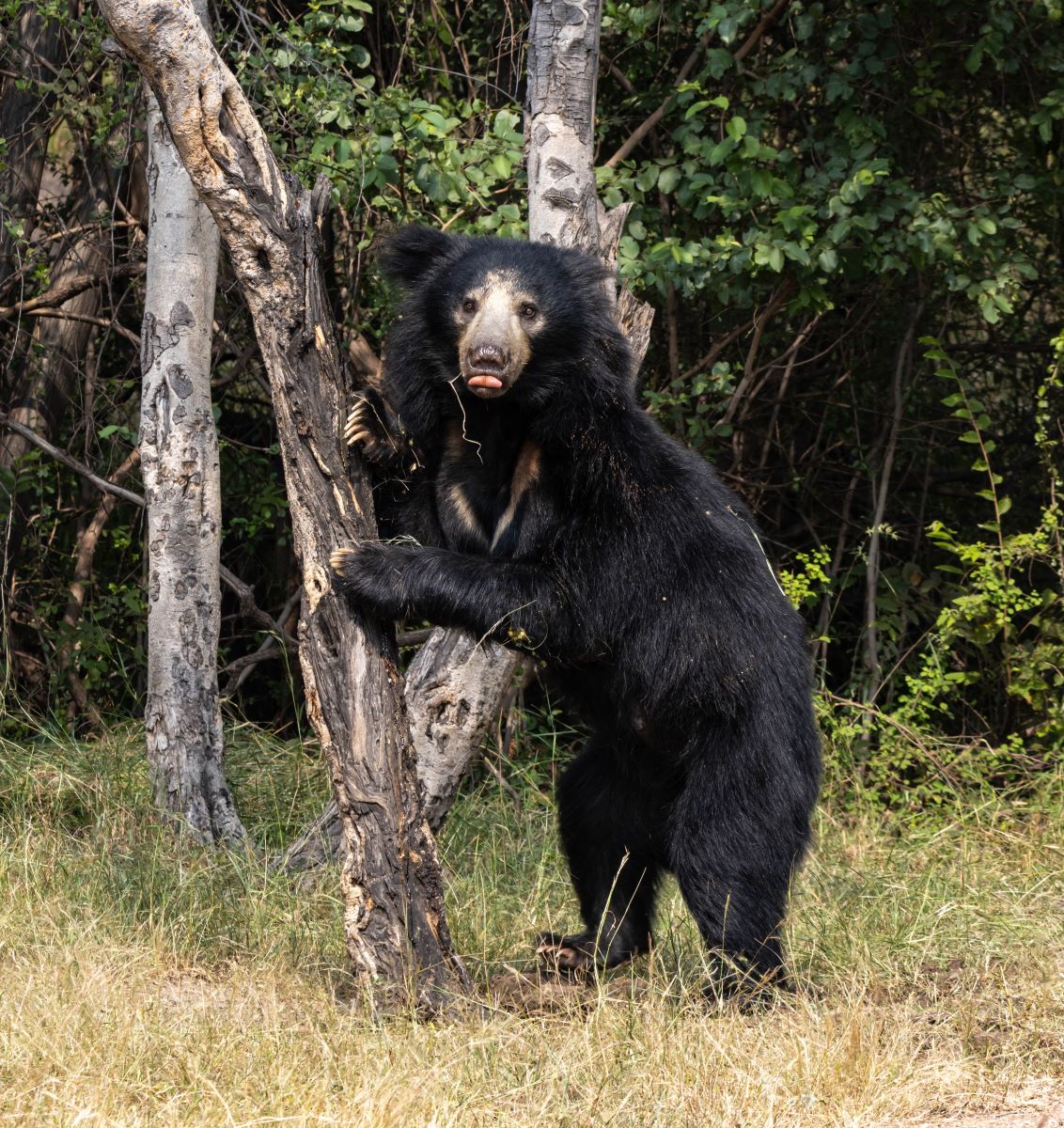Sloth Bear (Melursus ursinus) is one of the 8 existing bear species found in the world and the second in the Indian subcontinent apart from the Himalayan Brown Bear. This medium sized bear has some unique characteristics which differentiate it from other bear species. Sloth Bear is known for its distinctive appearance. It has shaggy black fur on the body with a white patch on the chest. Sloth Bear is recognized as one of the most aggressive and deadliest wild animals in India.
Here are some less-known facts about Sloth Bear:

-
IUCN Red List status:
Sloth Bear is listed as a Vulnerable species by the International Union for Conservation of Nature (IUCN) in their Red list. Mainly because of habitat loss for cultivation and expansion of civilization, this bear species is declared as a Vulnerable species.
-
Habitat:
Sloth Bear is a native bear species in the Indian subcontinent. The tropical or subtropical regions of India and Sri Lanka are the ideal habitats of Sloth Bear. Its habitats expands from South India to Sri Lanka and North India to Nepal.
-
Diet:
It feeds on fruits, ants and termites. Sloth Bear has exceptionally long claws. It uses the long and sharp claws for digging into termite mounds and anthills. Sloth Bear is myrmecophagous. More than half of its foods consist of termites and ants.
-
Behavior:
Sloth Bear is a social animal and prefers to avoid conflict with other animals. But it becomes dangerous threat for the ferocious animals like tigers when it comes to defend or counter attack. Sloth Bear is a nocturnal animal. They are also seen active during any time of the day and night. Since tiger, the main predator of Sloth Bear is also a nocturnal animal, they cannot avoid conflicts with each other. Sloth Bear has a very poor sense of sight and hearing; but a strong sense of smell.
-
Are Sloth Bears aggressive?
Sloth Bear is a peace loving animal and normally does not attack human beings unless disturbed or perceived threat from human beings. Though it looks like a slow moving animal, Sloth Bear becomes aggressive and dangerous for human lives if disturbed. There are instances of furious attacks of Sloth Bear towards human being without any apparent reason. Such incident happens if a person passes too close either while the bear is asleep or it feeds.
-
Breeding and Life span:
The breeding season of Sloth Bear is late spring or early summer. During the breeding period, the mother does not come out of the den. After giving birth to the cubs, the mother comes out with the cubs on her back and introduces them to the world. The mother takes care of the cubs up to 7 to 9 weeks from birth. A Sloth Bear lives up to 40 years in captivity. But its average life span in the wild is only 16 years.

Daroji Sloth Bear Sanctuary
Daroji Sloth Bear Sanctuary is located in the district of Ballari, Karnataka, India. This is the first Sloth Bear Sanctuary in Asia. Covering an area of 31.94 sq. miles, this Sanctuary is located at a distance of 31 miles from Ballari and 9.3 miles from Hampi, a UNESCO World Heritage Site.
This Sanctuary was established for conservation of Sloth Bear. After subsequent inclusion of some adjoining areas in the Bear Sanctuary, the total area has now become 8,272.8 hectares. Daroji Sloth Bear Sanctuary is one of the best places for a guaranteed sighting of Sloth Bear in its natural habitat. Thousands of tourists come here every year to see Sloth Bear in the wild. At present the estimated Sloth Bear population in Daroji is approximately 150 individuals.
Read more articles HERE
1 thought on “Sloth Bear: How Aggressive are they?”